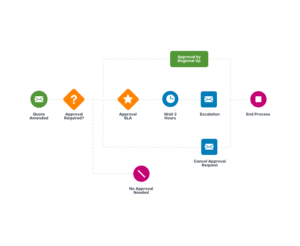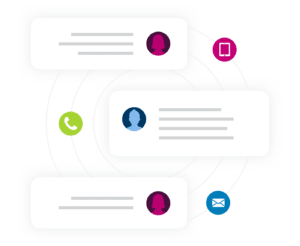7 Simple Steps to Service Success
Your customer service function is often where customer loyalty is secured or lost. Customers make judgments about the culture and capability of your organization based on their service experience.
Each of us wants to work for an organization that keeps promises made to its customers. It is heartbreaking when we fail. Let’s explore how we can put our best foot forward.
Here are seven elements to consider as you establish a service system:
1. Engagement
When your customer is ready to engage, are you there and available? Your customers expect you to provide frictionless options available anytime, from any device and location. Be where your customers are. Some customers demand to speak to a human, and others would rather not. A baseline standard for engagement channels should be email, web chat, self-service, and voice.
2. Routing
Connect a customer to the right service specialist or resource quickly. It’s essential to route service requests based on geography, working hours, the type of the engagement channel, the source of the request, or the content of the request. Service management systems should be able to manage available resources and route intelligently. This is where we often find bottlenecks—identify and eliminate them!

Sugar Serve lets you define multiple service centers with assigned people and hours of operation. Service requests can be routed to different queues monitored by skilled team members.
3. Context
Your customer expects that you know your business relationship and history in detail. Make it easy for your team to serve the customer armed with that knowledge. The more information your customer service specialist can quickly access, the more likely they will use that information to delight your customer. This is critical for customers with long-term and high-value relationships and should be well thought out.
In Sugar Serve, we do not want our customers to switch contexts to understand customer details. We provide a configurable ‘Focus Drawer’ that quickly pulls in all relevant customer knowledge for your agent without changing focus from the service case information.
4. Process
Your organization has both culture and process. Your customer service should reflect both. A service platform should enable you to easily apply your unique processes that reflect your competitive advantages. In a mature organization, service processes are always defined and results measured.
At SugarCRM, we provide a platform that can span multiple departments and teams in your organization. That makes for complete processes and fewer gaps when cross-departmental teams serve a customer. Sugar Serve provides tools to automate your processes and guide your team through them.
5. Service Level Management
Service Level Agreement (SLA) management turns a service system into a living, breathing part of your organization. An SLA is a defined amount of time to first respond or resolve a case promised to your customer. Typically, a service organization will have different SLAs depending on products and customer support contracts. By monitoring every service case against set SLA’s and alerting when predetermined limits are reached, you can achieve awareness and accountability for every service request.
Sugar Serve keeps track of the time a case has been opened and automatically compares it to any number of SLAs. When a case approaches the limit of an SLA, Sugar will trigger alerts and other actions.
6. Communication
Good communication starts with a confirmation that you have received and understood your customer’s request. The best practice is to send a message confirmation with a case number, the request made, assignment status, and the next step. Take care to craft the message language to reflect your organization’s culture or personality. Let the message content help your customer know that humans are servicing them. Make it easy for your case submitting customers to reply and continue providing additional information or feedback.

7. Measurement
To provide quality service, we need to understand the performance of our processes in place. Use real-time performance dashboards and regularly scheduled reporting on a wide range of metrics. Continually review the metrics, adjust the processes, and seek improvement.
If you get these seven steps right, you are on your way to ensuring that your organization keeps its promises to your customers.
We are cheering you on and will help!
This article was originally published on the SugarClub Leadership Lounge, where Sugar’s leadership team discusses what’s on their minds and welcomes the SugarClub community to ask any questions or share insights about customer experience, CRM, technology, building companies, or anything else!



